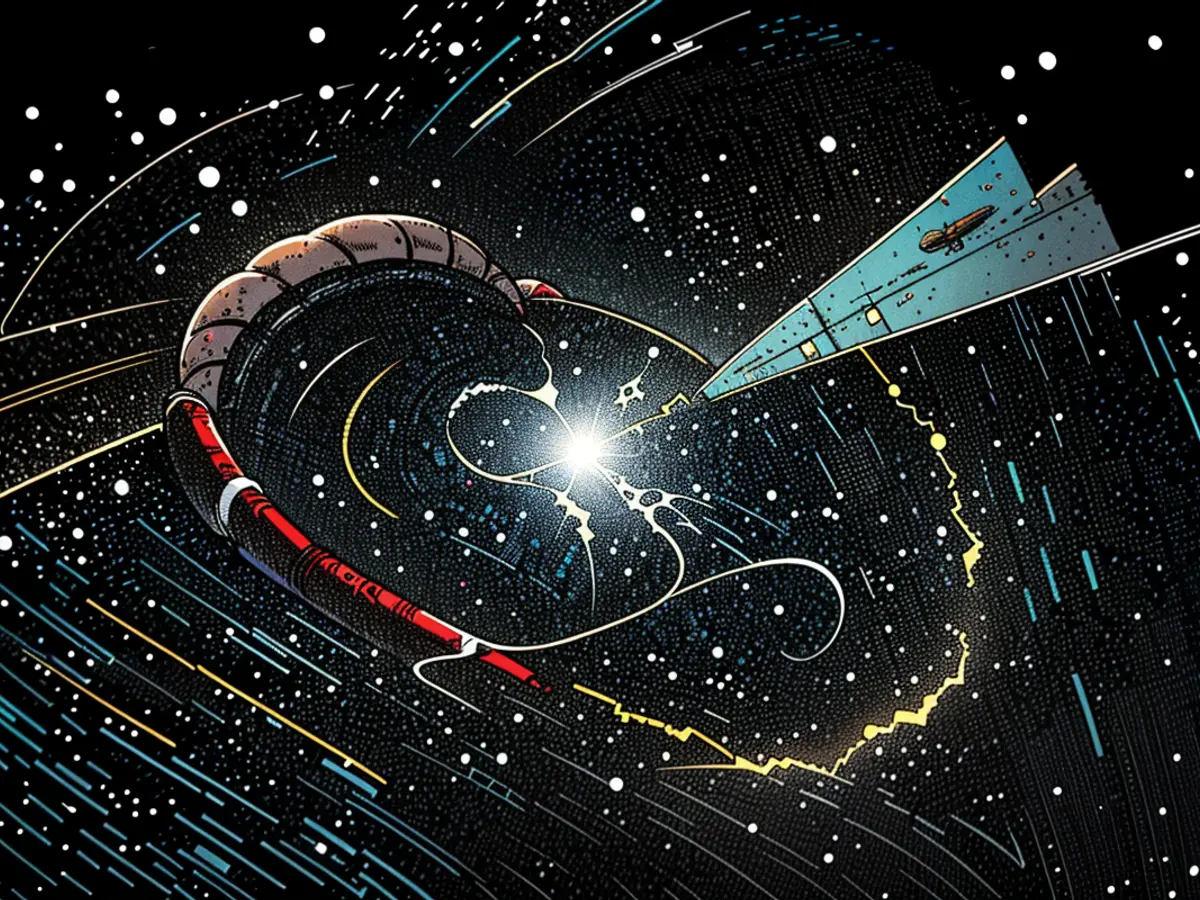Multitudes of space debris pose a threat to interstellar journeys
Billions of tiny chunks fly around Earth - issue escalating. These pose a threat to spacecraft, space stations, and the growing number of satellites. The European Space Agency's Department of Space Safety discusses the severity and approaches to tackle this issue.
Is there an international law in space?
Space isn't entirely lawless. As per the European Space Agency's Head of Space Safety at the European Space Operations Centre (ESOC) in Darmstadt, Holger Krag, the United Nations has issued guidelines that over 100 nations have endorsed. "It essentially dictates that each country must monitor and authorize space activities within its territory." This so-called Space Treaty also assigns liability for damages caused by space activities, according to Germany's Federal Foreign Office (AA): "Countries responsible for launching, procuring launch, or providing launch sites or facilities are usually liable for damage caused by their space objects on Earth, in the atmosphere, or in outer space if such damage is due to their fault."
Countries have the freedom to establish their safety regulations. Efforts are underway in Germany to draft a Space Act, as per the Federal Foreign Office. "The Space Treaty also includes provisions for preventing harmful contamination of space, which have yet to have significant real-world impact," the AA website states.
How can we prevent future space debris?
Besides governments creating national space policies, space agencies are also taking action. The ESA has pledged to cease producing unnecessary space debris by 2030. Recently, agreements have been reached with three satellite manufacturers to develop innovative satellite technologies for low orbit that do not produce waste. Currently, according to Krag, every sixth object in space exploses, and every second is not disposed of properly. This is set to change. "We want to state that disposal isn't just about success, but that we need to intervene and say that the object must be retrieved," says Krag.
The ESA plans to deliberately re-enter an obsolete satellite into Earth's atmosphere over the South Pacific on September 8. A spacecraft with gripping arms is being developed to retrieve and destroy space debris. NASA and JAXA space agencies have similar projects in progress, according to Krag. However, China and Russia remain secretive about such systems due to potential military applications.
Does space debris pose a risk to space stations?
Absolutely! The Chinese space station "Tiangong" ("Heavenly Palace") was recently hit by space debris and required maintenance. The International Space Station (ISS) also regularly avoids debris fragments. In certain cases, astronauts have taken shelter in docked spacecraft due to projectiles being on a possible collision course.
Where are collision risks highest?
"We calculate the area near Earth up to 2,000 kilometers in height," says Krag. Three-fourths of all spacecraft are found there. Collisions have already occurred, even with satellites. "So, we face a genuine problem there."
There's significant traffic up to 800 kilometers in altitude. "It's absolute chaos," according to Krag, above which the self-cleaning effect of the atmosphere begins to diminish due to decreasing gravity. According to NASA, debris below 600 kilometers falls back to Earth within a few years. Above 1000 kilometers, debris would remain in orbit for several thousand years.
The Starlink satellites of the US private space company SpaceX, owned by tech billionaire Elon Musk, orbit at around 500 kilometers in altitude. If one were to fail, it would disappear in the atmosphere after about five years, according to Krag. The sheer volume of satellites is the primary concern here.
According to the ESA, not all objects orbiting Earth are tracked. Based on statistical models, it's estimated that there are currently around 40,500 debris objects larger than ten centimeters, around 1,100,000 between one and ten centimeters, and 130 million up to one centimeter. The total mass of all space objects in Earth's orbit is estimated to be over 12,400 tons.
How might space travel evolve?
Around 100 satellites were launched per year 20 to 30 years ago, said Krag. "However, over the past three to four years, this number has skyrocketed to 2000," and it could continue rising or falling based on economic factors.
Krag does not rule out the possibility of up to 10,000 satellites being launched per year in the future, as costs continue to decrease, including through the use of reusable launch vehicles. He sees risks for spacecraft when they are in the same orbit as a large portion of space debris. However, once the first 800 kilometers of altitude have been reached after a launch, it becomes a mere statistical issue: "Regardless, we'll always make it out."
The United Nations has issued guidelines on space activities, emphasizing that each country is responsible for monitoring and authorizing activities within its territory due to the potential threat to spacecraft and space stations. The European Space Agency (ESA) is committed to reducing space debris, including pledging to cease producing unnecessary debris by 2030 and developing a spacecraft to retrieve and destroy space debris.
Despite international efforts, China and Russia remain secretive about their space debris management systems due to potential military applications. The International Space Station (ISS) often avoids debris fragments and maintenance was required on the Chinese space station "Tiangong" due to space debris collisions.







